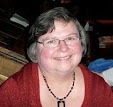In some reviews The Dutch House has been described as a dark fairy tale. In many respects it is: an absent father, a wicked step-mother, 2 step sisters, and a brother and sister trying to survive life ala Hansel and Gretel.
Set in the early 1950s and 1960s in Elkins Park and Jenkintown, Pennsylvania siblings Danny, the narrator, and his sister, Maeve try to cope with the sudden disappearance of their mother, Elna from their lives. They meet in their car in front of the house and reminisce about when they were residents there.
When Elna Conroy leaves her husband Cyril in an attempt to flee the ornate excesses of their home, The Dutch House, the children are left in the care of their nanny, Fluffy. After Elna leaves, Danny spends the weekends with his father collecting the rent that is owe on the real estate that Cyril owns. In the meantime, Cyril remarries and Andrea and her two daughters, Bright and Norma move into the Dutch House.
Danny was fifteen when Cyril dies suddenly in an accident and he is left alone with his step family because Maeve was out on her own. Andrea was not informed of this right away and took steps to ostracize her step children. All of Cyril's estate was left to her except for a trust fund targeted for Danny's education. Maeve proposes he go to medical school to use up as much of the money as possible.
The novel as narrated by Danny shifts back and forth between the present and his memories that really impact the way he lives his life. He is beholden to Maeve for basically raising him and he despises Elna for abandoning him. His relationship with his wife, Celeste, walks a fine line as he reconciles what everyone wants him to do with his live vs. what he wants to do. He repeats his father's actions in buying homes for Celeste that she doesn't really like, much to his not understanding.
The Dutch House is very much a character in this novel as it embodies and houses emotional and psychological realms. It is a place that Danny feels grounded and at the same time malcontent. Sitting with Maeve in front of the house gives him a sense of connection and secure. When Elna reappears in Danny's life, the house becomes a major player in his acceptance of her. The ending of the novel further cements the continuity of the house and family connection.
Maeve develops Type I diabetes when she is a teenager. In two different sections of the book it is attributed to the fact that Elna abandoned her and the trauma of that act. It was interesting to see how Patchett handled the ups and downs of glucose levels and crises that arise from that.
This is a very good read, especially for anyone who enjoys the interrelationships of families and coming of age. The writing is well crafted and the characters well drawn. Another Patchett recommended read.

